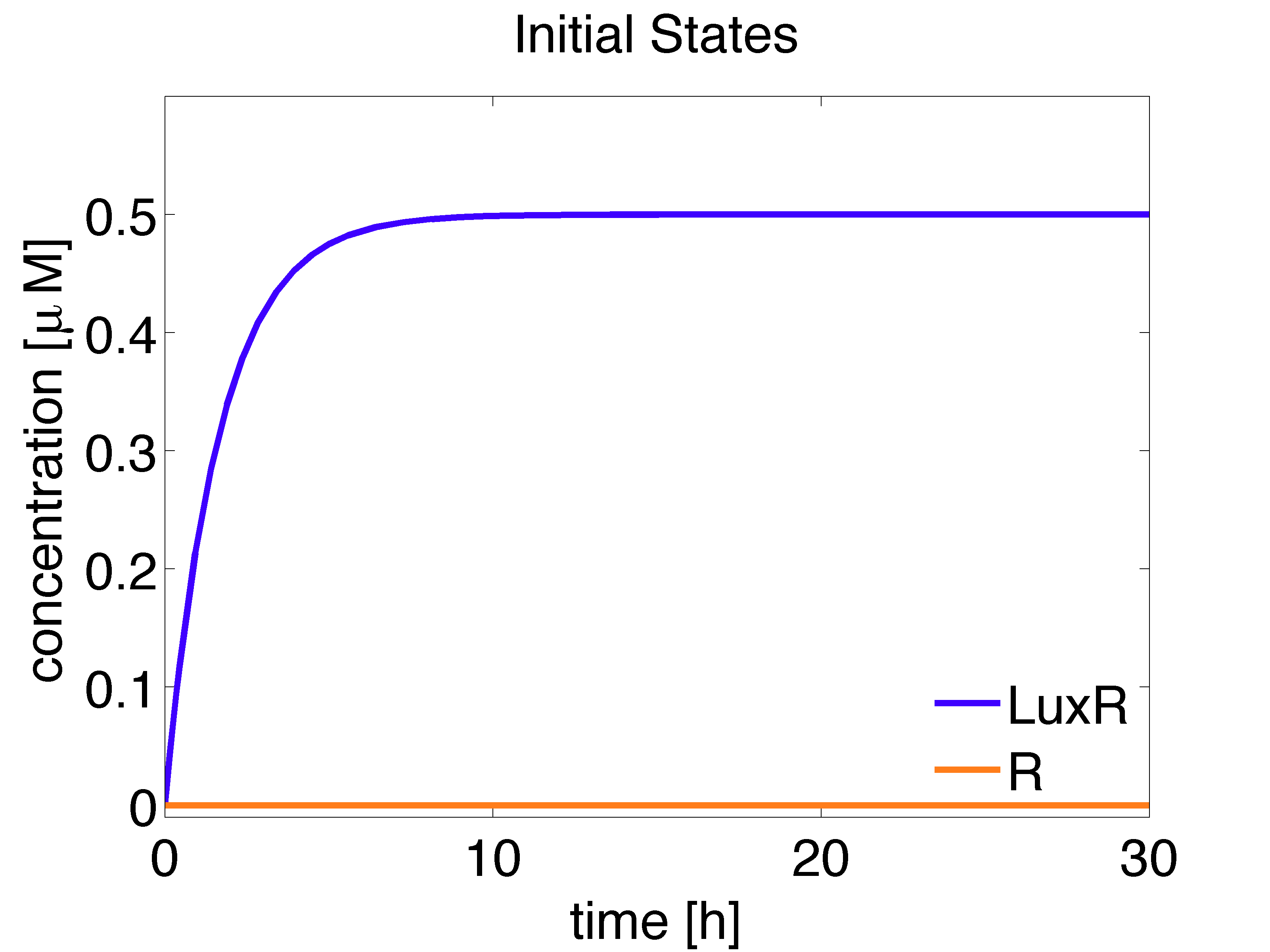Team:ETH Zurich/Modeling/InitialStates
From 2013.igem.org
Initial States
It is important to obtain the steady state concentration of molecules in our circuit, since these values can be used as biologically meaningful initial conditions for subsequent simulations. The cells plated on the game plate are from an overnight liquid culture. Thus, we assume that the cells have reached the steady state. It should be noted that the receiver cells grow in the absence of OHHL in the medium and this affects the concentrations of intracellular species whose production depends on OHHL.
Initial state for the Mine Cells
Three molecules of interest are produced by mine cells: NagZ, LuxI and OHHL. The first two are constitutively produced, whereas the synthesis of OHHL is dependent of LuxI protein. In all three cases, degradation is modeled as linear degradation. Furthermore, the diffusion of OHHL across the cell membrane is modelled as proposed by Garcia-Ojalvo et. al., 2004.
The ODEs for the states involved in the second module of the system are given below:
 "
"





